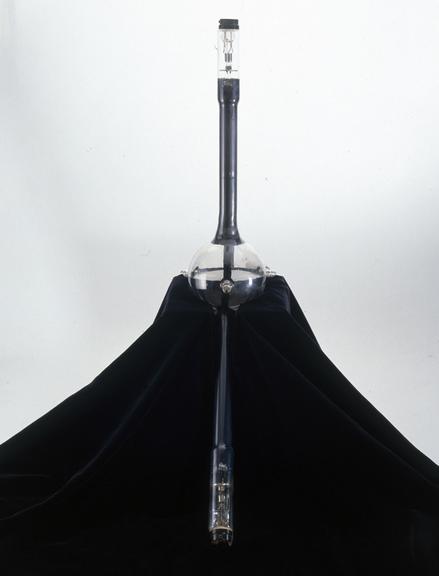Display Case for Baird's two colour cathode ray tube
Display Case for Baird's two colour cathode ray tube.
- Object Number:
- 1962-48/1
- type:
- case - container

Specimen of Baird's 2-colour cathode ray tube for colour television (telechrome tube), 1944.
The only surviving example of John Logie Baird’s Telechrome, the world’s first colour television picture tube. It is a cathode-ray display tube for 2-colour and/or stereoscopic television and was developed between 1942-44 by Baird and only two assistants.
The 1943-44 television committee appointed to coordinate British television after the war (known as the Hankey Committee) recommended that a high-definition (1000-line) colour television system based on Baird’s Telechrome should be implemented after the end of the war. Due to the difficult post-war conditions and Baird’s premature death in 1946 these ambitious plans never materialised. The existing 405-line black-and-white television system developed by EMI in the pre-war period was expanded across Britain. British colour television broadcasts did not officially begin until 1967, over 20 years later.
Display Case for Baird's two colour cathode ray tube.
Specimen of Baird's two colour cathode ray tube for colour TV.

Holder and deflection coils part of Baird's 2-colour cathode ray tube for colour television. The only surviving example of John Logie Baird's Telechrome, the world's first colour television picture tube. It was developed between 1942-1944 by Baird and only two assistants. It is a cathode-ray display tube for 2-colour and/or stereoscopic television.